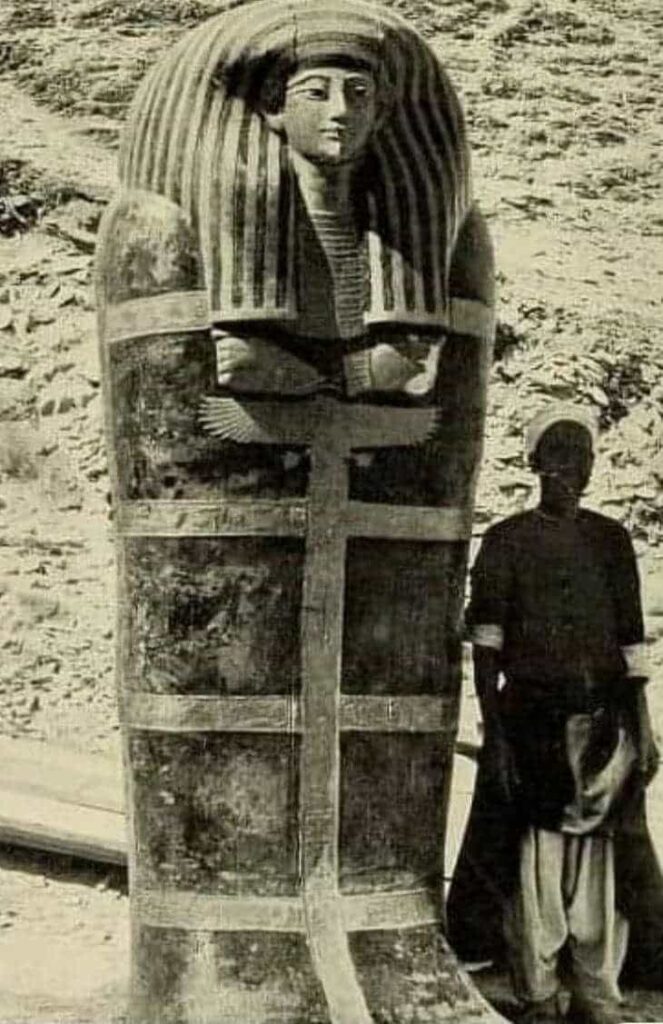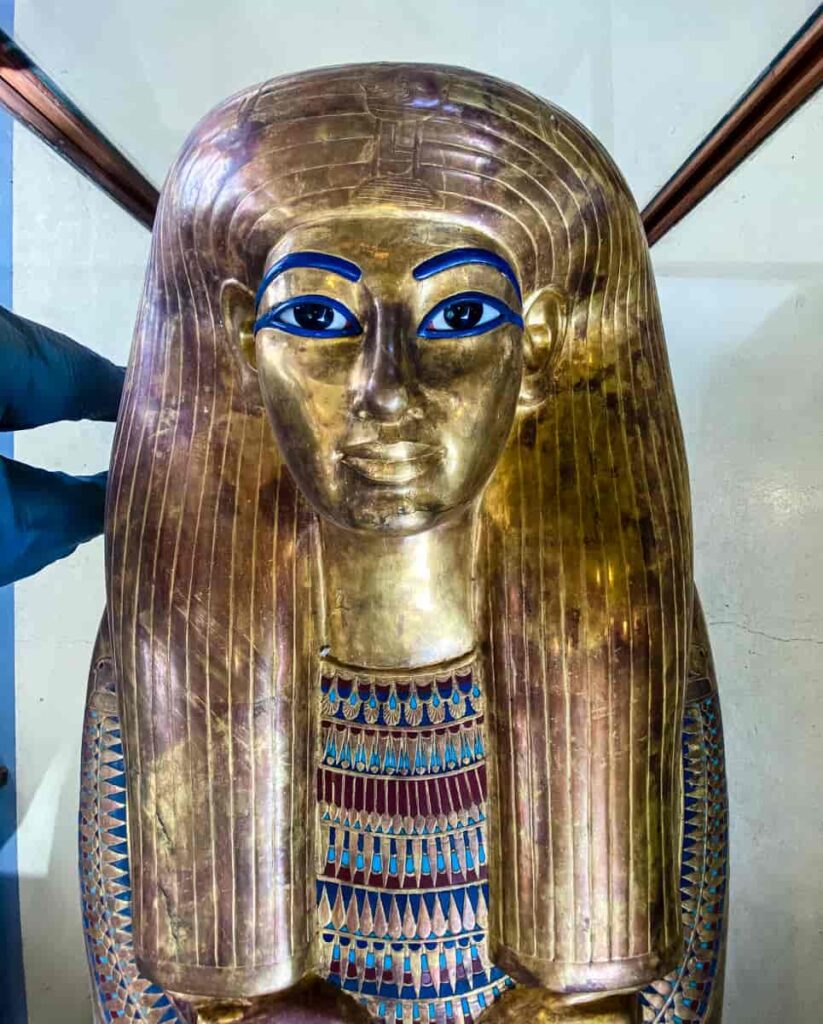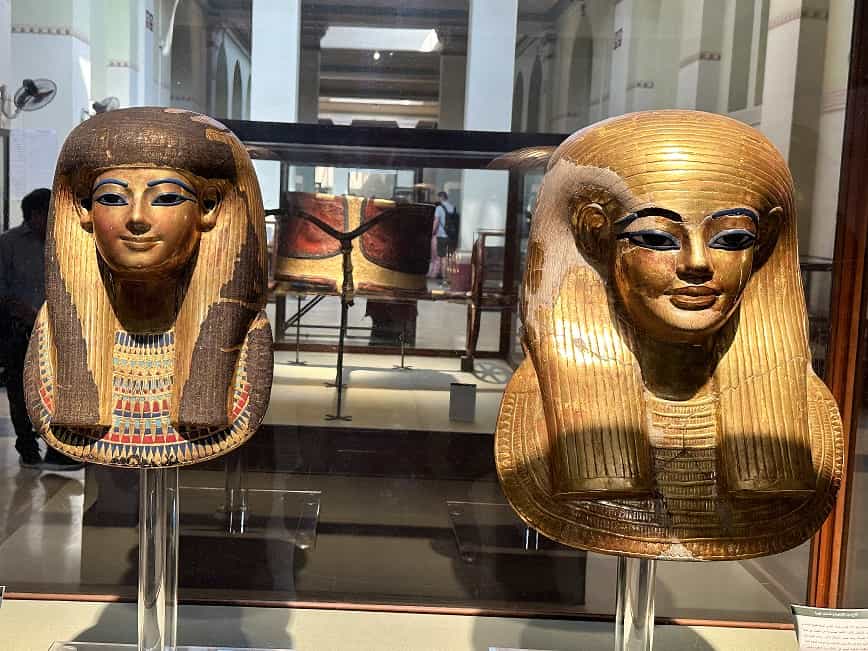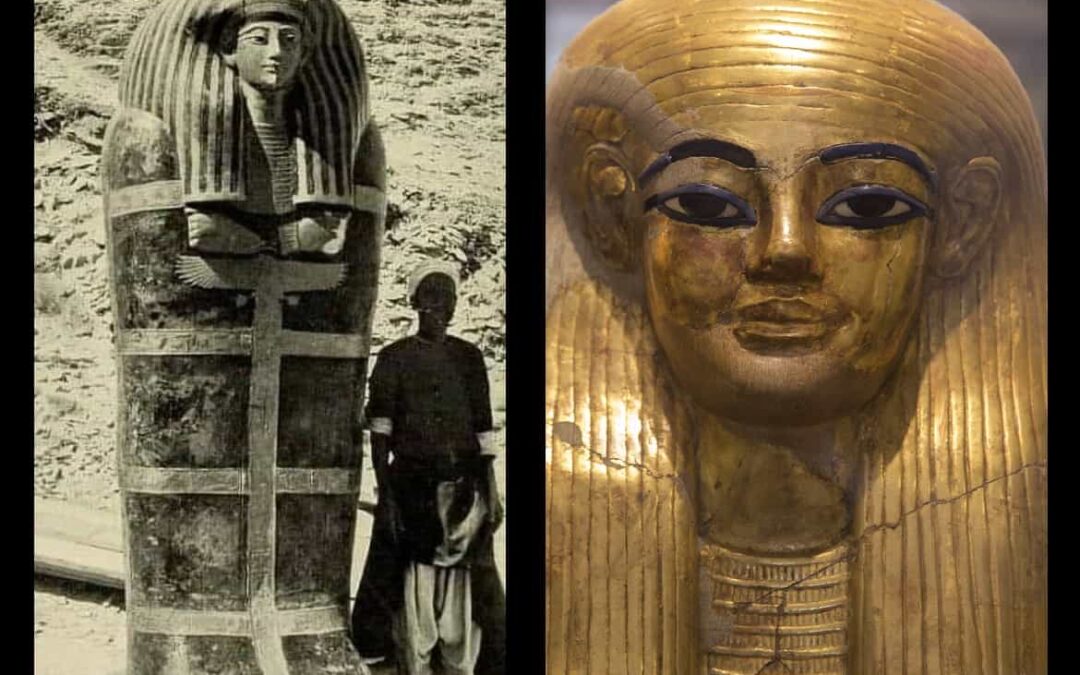Yuya and Thuya were a prominent couple who rose to remarkable prominence during the reign of Pharaoh Amenhotep III, approximately between 1390 and 1352 BC. They were the maternal grandparents of Pharaoh Akhenaten and, consequently, the great-grandparents of the famous Pharaoh Tutankhamun.
Originating from Akhmim, a city located in what is now the Sohag Governorate in Upper Egypt, Yuya and Thuya held noble status, despite not being of royal lineage. In ancient times, Akhmim was known as Ipu and served as the capital of the Ninth Nome of Upper Egypt. While they were not born into royalty, some scholars suggest that Thuya may have descended from Queen Ahmose-Nefertari, a prominent figure in Egyptian history.
Yuya’s status grew significantly following the marriage of his daughter, Tiye, to Pharaoh Amenhotep III. As a result, Yuya was bestowed with a multitude of prestigious titles that secured his legacy. Among these were “Divine Father,” “First among the King’s Companions,” “Confidant of the King,” “Only Friend,” “Prophet of Min,” and “Great Prince,” along with many other honorifics that highlighted his influence at the royal court.
Tomb KV46
Tomb KV46, situated in the Valley of the Kings in Egypt, served as the burial place for Yuya and Thuya, prominent nobles during the reign of Thutmose IV and the in-laws of Pharaoh Amenhotep III.
Prior to the discovery of Tutankhamun’s tomb, KV46 was considered the most richly furnished and best-preserved tomb in the Valley. It was also the first tomb to be discovered with an extensive collection of grave goods. The tomb lies in a smaller offshoot of the main valley, nestled between two tombs from the Ramesside period.
Layout and Structure
The tomb’s entrance is accessed via a staircase that leads to a doorway, which was originally sealed with stone and stamped with necropolis seals. The doorway opens into a corridor that leads to another flight of stairs and eventually into the burial chamber.
The burial chamber itself is rectangular in shape, with a section at the rear that is slightly sunken, about three feet below the rest of the floor. The ceiling remained unfinished, and the walls were neither smoothed nor adorned with plaster or decorations.
Contents of the Tomb
Numerous artifacts were discovered within the tomb, including canopic jars, musical instruments, chairs, Queen Tiye’s ceremonial chair, beds, a jewelry chest inscribed with the names of Amenhotep III and Tiye, a chariot, vessels filled with natron, and two sarcophagi. Yuya’s sarcophagus was placed on a sled and contained three mummy-shaped coffins, with his mummy inside, fully intact. Thuya’s sarcophagus also held two inner coffins, and her intact mummy was discovered within. Interestingly, differences in their embalming techniques suggest that Yuya and Thuya passed away at different times.
Although the tomb was largely untouched, evidence suggests that it was looted three times. The first robbery likely occurred shortly after the tomb’s initial closure, targeting perishable goods such as ointments and oils. Jar seals were broken to inspect their contents. Further thefts may have taken place during the construction of nearby tombs KV3 and KV4, as suggested by seals found on the site. The entrance was resealed and concealed under debris from these tomb constructions, effectively hiding the tomb until its rediscovery in 1905 by James Edward Quibell.
The Mummy of Yuya
Yuya’s mummy was discovered partially unwrapped, with his torso being exposed due to ancient looters. When the body was removed from its innermost coffin, a broken necklace made of large gold and lapis lazuli beads was found resting behind his neck. It is believed the necklace fell there after being snapped during the looting.
The Mummy of Thuya
Thuya’s mummy is remarkably well-preserved and reflects a woman estimated to be between 50 and 60 years old. She stood about 145 cm tall (4 ft 9.1 in). When discovered, Thuya’s body was lying peacefully in her coffin, wrapped in a large linen shroud tied at the back. Four additional bandages helped secure the shroud, leaving her face and feet exposed.
During an examination by anatomist Douglas Derry, along with Grafton Elliot Smith, it was noted that Thuya was wearing gold foil sandals on her feet. Her arms were positioned alongside her body with her hands resting flat, and her ears showed signs of being double-pierced.









